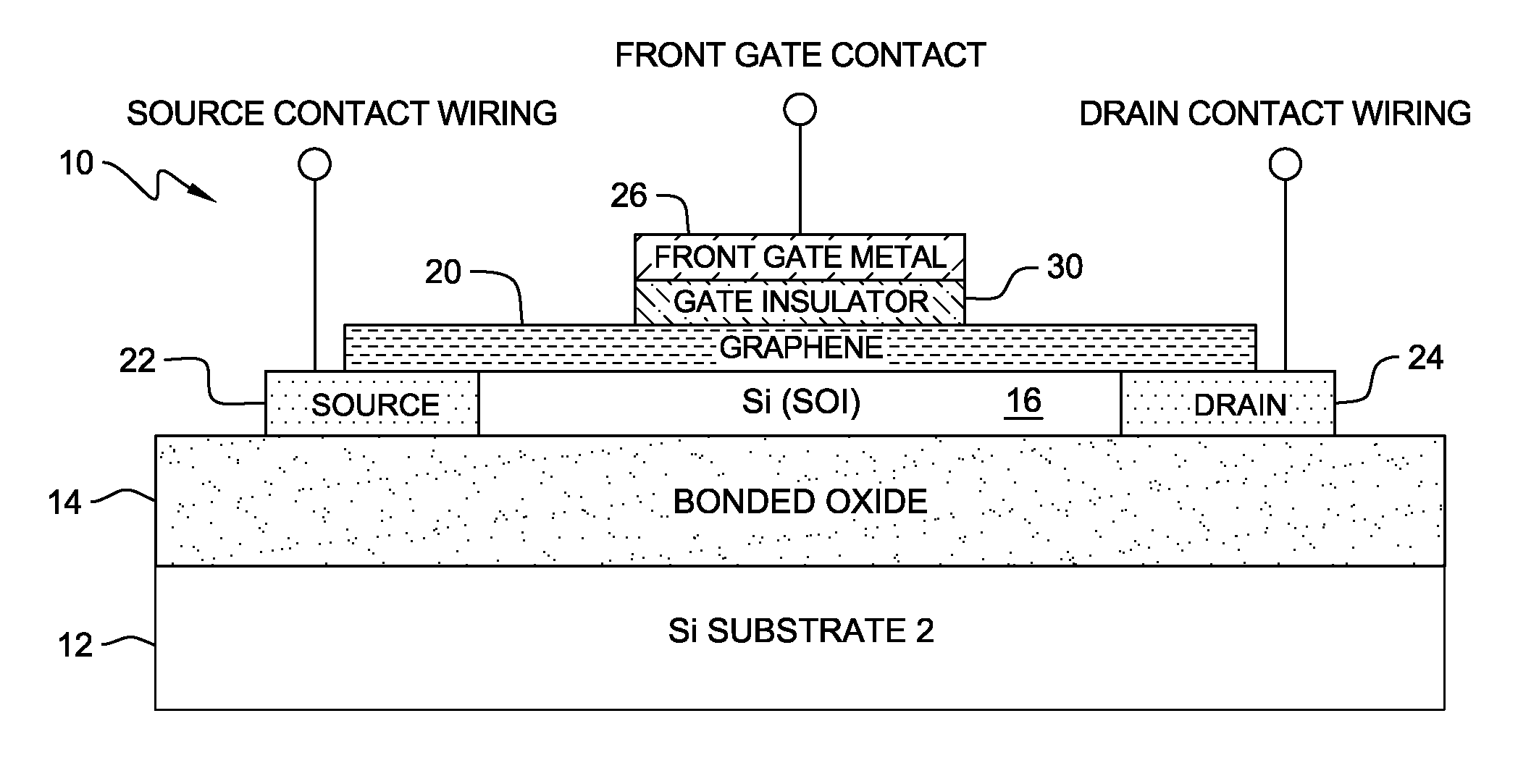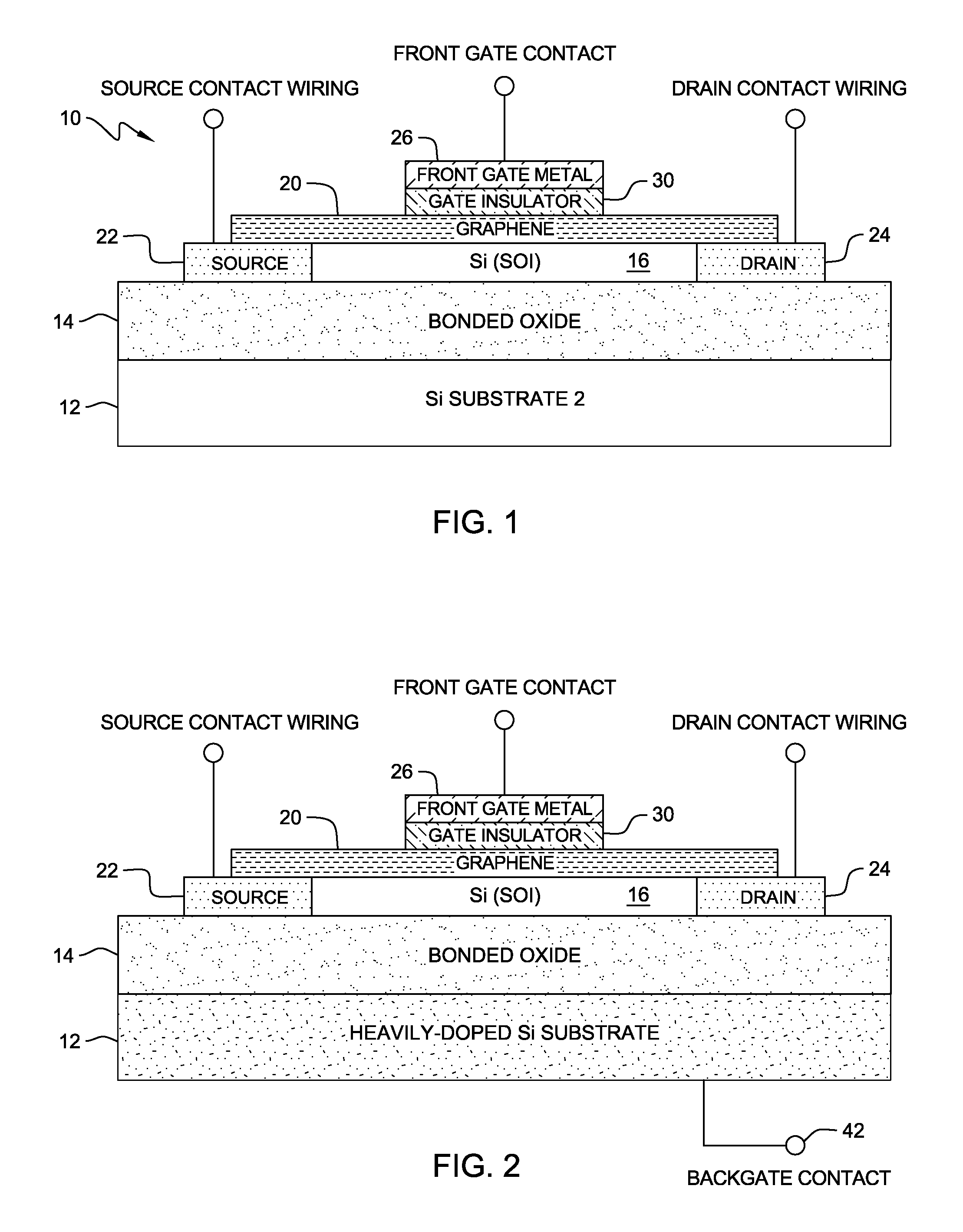Fabrication of graphene nanoelectronic devices on soi structures
a technology of nanoelectronic devices and graphene nanoelectronic devices, which is applied in the direction of semiconductor devices, basic electric elements, electrical apparatus, etc., can solve the problems of difficult integration with other circuit components, and the integration of graphene devices and silicon devices has not been realized
- Summary
- Abstract
- Description
- Claims
- Application Information
AI Technical Summary
Benefits of technology
Problems solved by technology
Method used
Image
Examples
Embodiment Construction
[0034]In the following description, numerous specific details are set forth, such as particular structures, components, materials, dimensions, processing steps and techniques, in order to provide a thorough understanding of the present invention. However, it will be appreciated by one of ordinary skill in the art that the invention may be practiced with a wide range of specific details. In other instances, well-known structures or processing steps have not been described in detail in order to avoid obscuring the invention.
[0035]FIG. 1 shows a cross-sectional view of an example graphene electronic device fabricated on a silicon-on-insulator (SOI) structure according to one embodiment of the present invention. Structure 10 comprises a base semiconductor substrate 12, an insulator layer 14, a semiconductor layer 16, graphene layer 20, source region 22, drain region 24, front gate metal 26, and gate insulator 30.
[0036]The base semiconductor substrate layer 12 may comprise any semiconduc...
PUM
| Property | Measurement | Unit |
|---|---|---|
| thickness | aaaaa | aaaaa |
| thickness | aaaaa | aaaaa |
| thickness | aaaaa | aaaaa |
Abstract
Description
Claims
Application Information
 Login to View More
Login to View More - R&D
- Intellectual Property
- Life Sciences
- Materials
- Tech Scout
- Unparalleled Data Quality
- Higher Quality Content
- 60% Fewer Hallucinations
Browse by: Latest US Patents, China's latest patents, Technical Efficacy Thesaurus, Application Domain, Technology Topic, Popular Technical Reports.
© 2025 PatSnap. All rights reserved.Legal|Privacy policy|Modern Slavery Act Transparency Statement|Sitemap|About US| Contact US: help@patsnap.com



